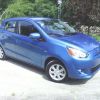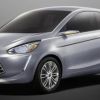PS: so, did you try the circuit on your way to work today?
Have you figured out how much power the various systems in the Mirage draw?
I once did that for the Metro/Firefly, as a starting point for calculating how much battery capacity you would need in an alternator-off scenario.
The Metro/Firefly uses a surprisingly small amount of power to run its 1.0L 3-cyl engine (no accessories) - just ~60 watts with the alternator off, and ~90 watts with the alternator charging.
FYI:
Code:
Watts ... item
1.7 key @ ACC, ECU awake
17.8 key @ RUN, fuel pump finished priming
54 parking lights, dash lights high
59 brake lights
112 headlights, dash lights high
120 headlights high beam, dash lights high
36 key @ RUN (fuel pump running - priming)
6 radio low vol
18 radio high vol
96 radiator fan high
30 heater fan low speed (1)
49 heater fan 2
66 heater fan 3
81 heater fan high (4)
58 rear defrost
5 interior light
36 wipers low
53 wipers high
66 cigarette lighter
78 hazard lights (est)
42 horn (est.)
39 reverse lights
60 engine idling @ 880 RPM (alternator disconnected)
62 engine running @ 2500 RPM (no alt)
92 engine idling @ 880 RPM, alternator on (field current is high, topping up battery)
89 engine running @ 2500 RPM, alternator on - lower field current as battery voltage came up
Full thread: Tested: power draw of Geo Metro accessories & systems (volts, current/amps, watts)




 2015 Test Mirage
2015 Test Mirage Swarthy
Swarthy


 Reply With Quote
Reply With Quote
 Underdog
Underdog
 2002 Mitsubishi Delica Space Gear L400
2002 Mitsubishi Delica Space Gear L400
 "Global Small" Concept
"Global Small" Concept Even Fancier Metro (Mirage #2)
Even Fancier Metro (Mirage #2) Fancy Metro (Mirage #1)
Fancy Metro (Mirage #1) Loaner #1 from Mitsubishi
Loaner #1 from Mitsubishi Loaner #2 from Mitsubishi
Loaner #2 from Mitsubishi Mirage #3: Appliance Car
Mirage #3: Appliance Car So, it is self exciting somehow. This simply won't work. It started exciting (powering up) at probably a little over 2k rpm.
So, it is self exciting somehow. This simply won't work. It started exciting (powering up) at probably a little over 2k rpm.